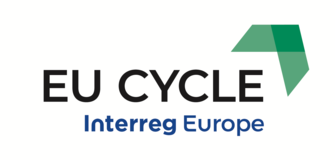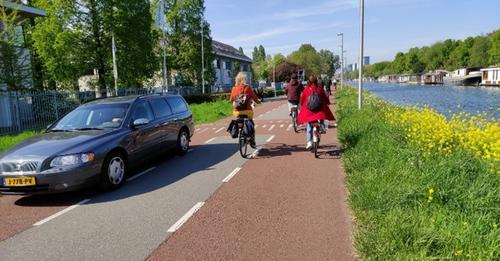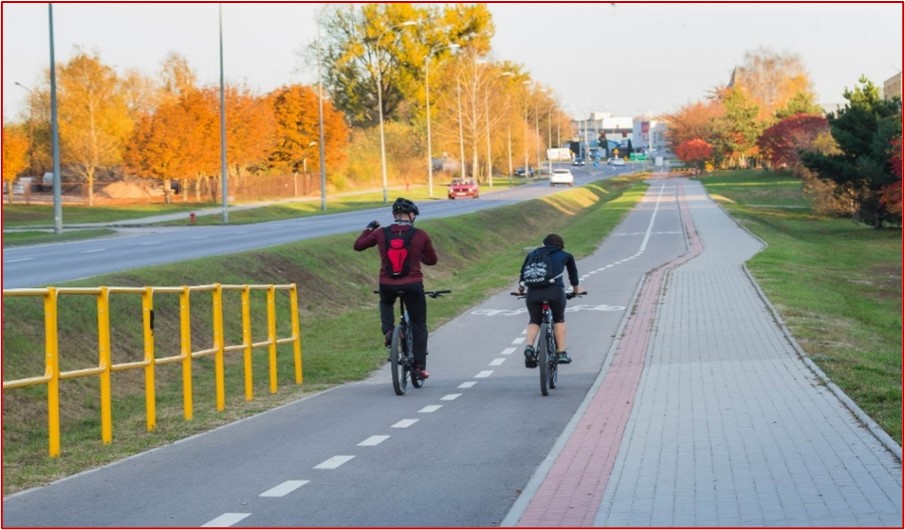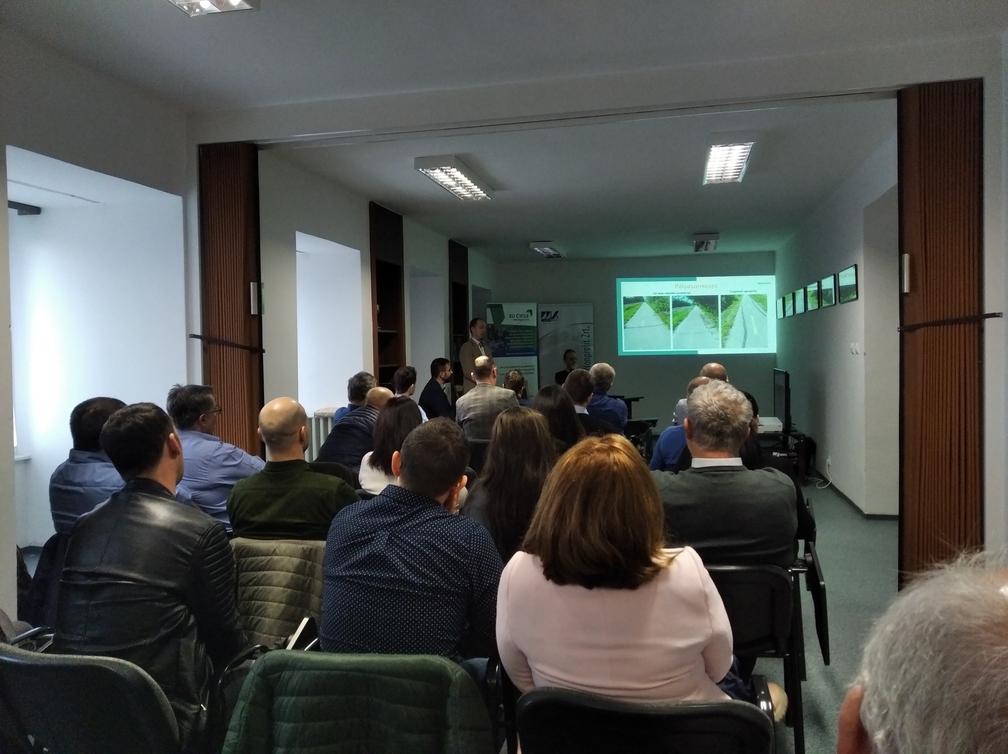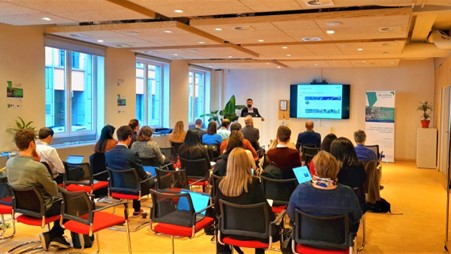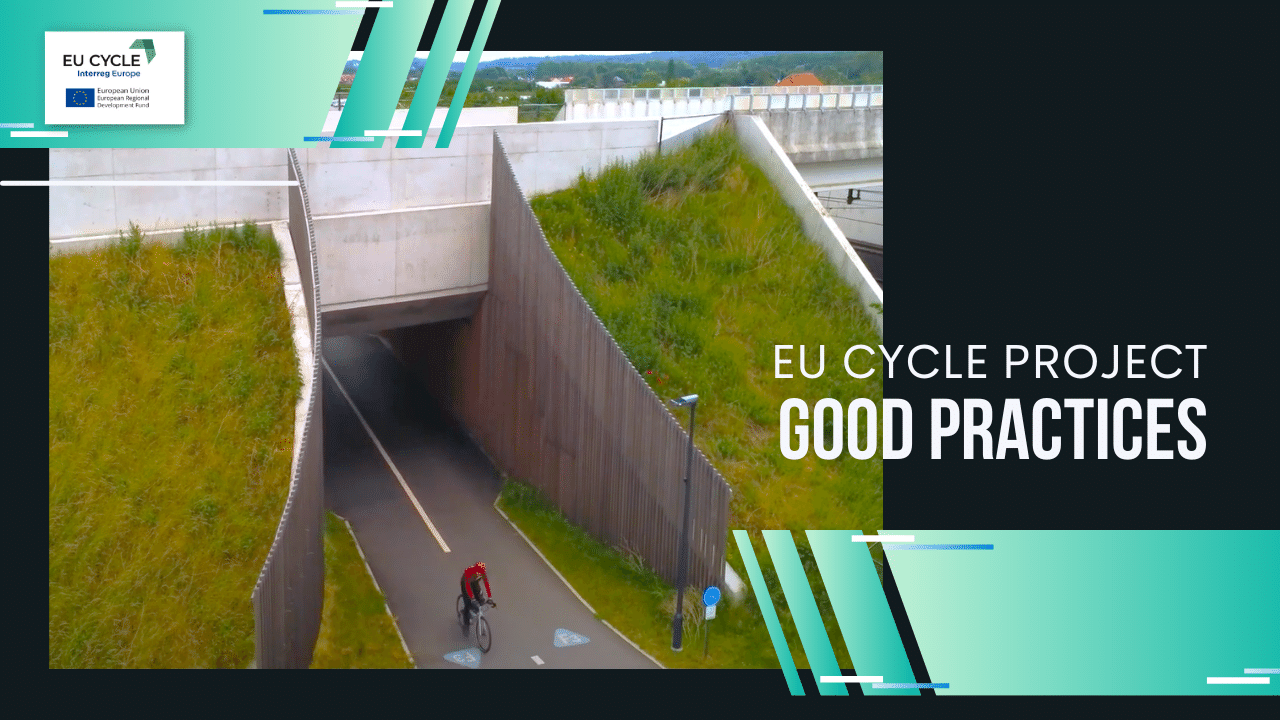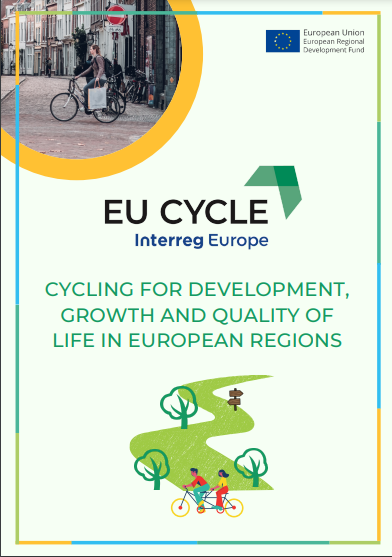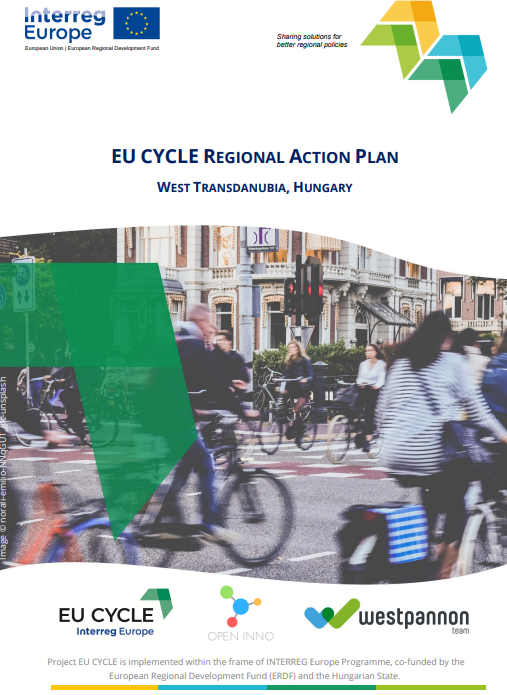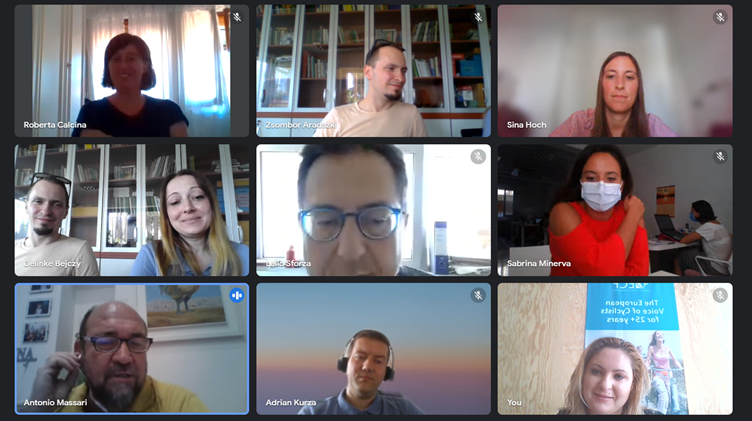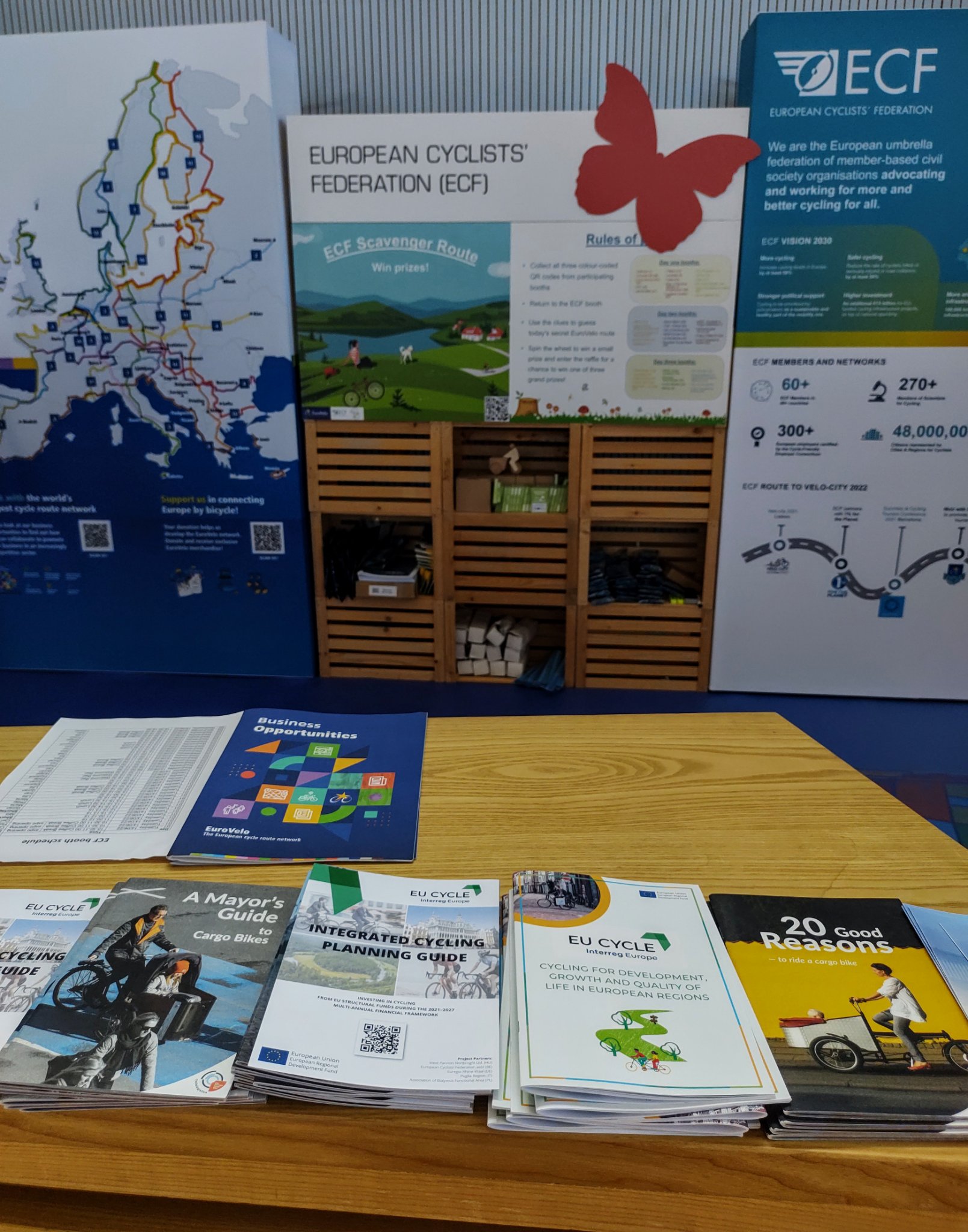
EU CYCLE project partners kicked off the new 2021 year with another online study visit, exploring this time good practices in urban-rural connections.
The participants made a first virtual stop in Belgium, namely Province of Flemish Brabant, and explored cycling networks and highways.
Talking about cycling highways, Frederik POUSSET, Mobility Policy Officer, defined them as mobility products that provide a high quality functional cycling connection, acting as a backbone of a cycling network and connecting cities, suburbs and residential areas.
A Brussels - Flemish Brabant study was launched in 2012 around cycle highway network, which was developed further into a network in 2014, followed by a new logo and signage in 2017 that significantly improved its visibility.


Further on, the workshop participants took a deeper look at the F3 cycle highway, Leuven-Brussels (30km), which started as a cycle route along the high speed railway.
Initially the route was longer due to the detours of Kortenberg, but following a very strong support received from the community, investments were made to transform it into a cycle highway, with top quality crossings, making the F3 more direct, comfortable, and safer. After performing some research along the F3 cycle highway, it resulted that compared to 2012 when the share of electrical bikes was around 15%, in 2018 that number increased to almost 40%.


Because some regions do not have the potential for building cycle highways, a different type of route was presented as well, namely ‘doorfietsroute’ which can be translated in English as ‘a route on which you can cycle smoothly’, that uses the available infrastructure, and proved to be a good solution for some rural regions.
Another good practice discussed by the participants was the cross-border cycling highway Europa-Radbahn, presented by Sina HOCH, Project Coordinator at Euregio Rhine-Waal.
Connecting the City of Kleve (DE) and the city of Nijmegen (NL) via more rural areas of the municipalities Kranenburg (DE) and Groesbeek (NL), the cycle highway measures 23 km and was built as a result of joint construction efforts that helped shorten construction time.
The cycle highway was planned with the idea to increase the modal share of cycling for commuters and tourists in the region. It also aimed to provide a well-developed and dense cycle network across the border and attract more tourists, by making the cycling safe and comfortable.


Along the cycle highway the cyclists are prioritized over motorised traffic, this being possible thanks to the infra-red sensors, e.g. where cycling highway crosses a street the sensors will make the traffic lights turn green when the cyclists approach so they do not have to stop.
Along the route several rest areas were also made available, with parking facilities, e-bike charging stations and (e-)bike rentals. A special focus was put on sufficient lighting at crucial points and junctions and cycling-friendly surface.

A comprehensive communication strategy was put in place as well, as an integral part of the planning process, plus a continuous presswork, targeted brochures and explanatory films highlighting benefits of the new route for different target groups.
The meeting continued with discussions around the draft of the deliverable ‘Integrated cycling planning guide’, that has as a main objective to unlock more and better funding for cycling from EU Structural Funds 2021 – 2027.
Fabian Küster, Director of Advocacy and EU Affairs at European Cyclists’ Federation made a brief presentation of the guide that will include chapters on the priorities for the next budget, recommendations on National Recovery and Resilience Funds, safe cycling infrastructure, good practice examples, detailed benefits of cycling investments in Europe etc. The partners will continue to work on the deliverable and will produce a final version beginning of 2021.

The recording of the workshop can be accessed on the EU CYCLE YouTube channel.
